New ESS Movement of the 1960s Launch of Sputnick, amid the Cold War, proved US science education lacking, focusing a new push towards improvement—increasing student ES enrollment from couple thousand - 1948, to quarter-million+ - 1963
1. Attention focused on ESS (geology, astronomy, oceanology & meteorology) in secondary schools, especially at HS & MS level 2. Changed philosophy on how ESS was presented—from fact-based approach to an emphasized investigative approach While the ESCP was a national project, there was no national ESS organization for HS schools/teachers. NAGT for college/university existed, but it did not serve HS education. Times were changing & need grew with the new approach to teaching |
Michigan Earth Science Teachers Association
"What was ES Education in Michigan like during the mid-1960s?"
MESTA's participation of the 1966 Michigan Science Teachers Association (MSTA) annual convention started a long tradition of conference representation. Results of a 1970 questionnaire instituted field trips to draw ES teachers together & encourage membership; becoming frequent & numerous over the years, and successfully increasing membership Then in 1982, increased ES presentations at MSTA Convention (20% of 86 sessions featured ES topics, mostly by MESTA members) showed interest was booming & discussions for a national organization became serious. |
Birth of NESTA “Let’s take what we have, ‘Teachers helping teachers’ national?”
Since that initial meeting NESTA membership has grown, at it largest, to several thousand teachers across the US. Additionally, many other State ESTAs were organized NESTA spearheaded networking Earth-related organizations & professionals. Early liaisons with AGI placed NESTA members on national committees and served as interns at AGI / USGS. NESTA is associated group/society of NSTA, AGI, AGU, GSA & member of the Triangle Coalition In its association with NSTA, NESTA in conjunction with NAGT, recognize teachers selected as outstanding Geoscience teachers with the OESTA Award |
History of Advocacy MESTA's promotion of ES increased the number of schools offering ES courses in Michigan from 132 schools in 1967, to 247 schools by 1971 The May 1970 MES summarized the status of K-12 ES education— Approx two million students attended 7-9 grade ES course, but stressed drastic shortage of qualified ES teachers with no solution to the problem in near future By 1970s, ESCP textbook/materials were being used across the Country—135,000 copies produced. MESTA lobbied for self-directed approach where the teacher’s role likens to a research coordinator—student having a larger part in deciding study; requiring major revisions to teacher-preparation in college In 1984-85 NESTA , in correspondence with National Commission on Excellence in Education, Carnegie Foundation & other national commissions, emphasized the "lack of consideration" for ESS as an integral part of K-12 science education. Replies from correspondence confirmed this idea was held in many circles—NESTA drafted a position paper on Importance of ESS Education— published in The Earth Scientist & NSTA publications—endorsed by NSTA, NAGT, AGI, AGU & Council for Elementary Science International—causing more inclusion of ES as part of all K-5 curricula; ES as one of the integral strands in the NSTA Scope & Sequence Coordination project. These and efforts by NESTA members had important impacts on the National Science Education Standards/Benchmarks. NESTA’s association with AGU results in a program: "The Earth Science Alliance" —placing individual NESTA members in touch with ES professionals to improve "Earth literacy" of pre-college students. Professionals provided support, short field trips, seminars, discussion sessions, etc. to help teachers in the classroom |
|
NESTA in the 21st Century! Times have changed—social media—free-access to information—conferences not the strength they once were—What could a teacher's association possibly offer? ESS is in a decline across the Nation. States have reduced the amount of ESS classes, often embedding them into other science classes. Many districts do not have college-preparatory ESS class for college bound students. Counselors advise students ESS is "rocks for jocks." AP / IB refuse to recognize ESS. Geoscience departments are closing in universities. We are in crisis There has never been a time greater than NOW for a teacher association that advocates strongly for ESS for everyone Join us as we advocate for ESS in many ways—offering cutting-edge professional development—bringing a community of ESS teachers, academics, professionals together—offering training/resources to fight for ESS in your State/district—ensuring academic & professional organizations bring K-12 issues to the forefront |
Original Logo (1983-2004)
Colored Logo (2005 -2021)
| New Logo (2022 - )
| What is in a Logo? Wave - Blue = Oceanography Cloud - Grey = Meteorology Comet - Yellow = Space Sciences Mountain - Orange = Geosciences Mountain - Green = Environmental sciences Mountain – Light Blue = Climatology & Hydrology The Big Dipper = Like the Big Dipper points towards Polaris, the North Star that guided mariners on their journeys across the vast oceans, so too teachers assist students to find their true path in life. Teachers are the Big Dippers guiding students towards their own personal North Star Two Globes (flanking logo) = Equity in Earth Science for all students “One Earth. Our Future.” = 1968, William Anders of Apollo 8 took the famous Earthrise photograph on the Moon, allowing us to realize that we have one Home, and that all of our actions impact each other. Educating all students with the Earth Sciences passes on the legacy of Earthrise, however Earth Science classes are in decline across the Nation. Advocating Earth Science for All has never been more important that it is right now. And like our choices impact each other, the tagline is placed in the Ocean, the great regulator of our climate, what is put in it in one place effects the entire Globe, so does our Advocacy impact the knowledge to make intelligent choices regarding the health of our One Earth. Our Future. |
PRIDE IN OUR JOURNEY |
1965- Michigan Earth Scientist first mailing 1966 - Michigan Earth Science Teachers Association formed 1966 - MESTA attends first convention, MSTA at Everett HS 1966 - NAGT & AGI organized, also offering support to K-12 teachers 1971 - MESTA first field trips 1971 - ES Class - Scripted slide sets pioneered by MESTA. Later, NESTA members assisted, 25 sets & 18 short sets. Development of internet retired slide sets 1974 - Board Meeting note refers to MESTA President writing letters to other state ESTAs to ask interest in forming a national association 1974 - MESTA plans affiliation with NAGT 1975 - NAGT demands MESTA teachers could only be members of the East Central Section 1982 - $300 grant - "mailings to promote NESTA" approved to inform plans for new organization available at 1983 NSTA Chicago Convention 1982 - Jan Woerner elected 1st NESTA President, organization has 14 members 1982- MESTA journal include NESTA information 1983 - 9 April - NESTA officially organized at the annual NSTA Meeting & recognized as NSTA Associated Group 1984 - The Earth Scientist(TES) first printing—initially MES w/ different cover—this continued until 1991; 165 members 1984 - 1st NESTA field trip in conjunction w/ NSTA—“The Geology and Archeology of Boston Harbor" 1984 - 1st NESTA-MESTA Field Conference—Black Hills & Glacier NP—lead by Dick Munson 1985 - Developed new slide sets off MESTA's past idea, assisted in finances 1985 - begins Internship program for teachers at various government/industrial organizations.—most successful w/ AGI & USGS 1985 - The 1st Share-a-thon—held because Jan Woerner challenged Sharon Stroud to come up w/ session for NSTA Cincinnati 1985 - . Nonprofit status first filed w/ IRS—incorporated in Michigan as Domestic Nonprofit Corporation; Dues $5 | 1986 - 1st evening social/reception Friends of NESTA held at the annual NSTA meeting —sponsored by Sharon Stroud w/ help from Dave Mastie & others renting adjoining hotel rooms to provide space 1987 - 1st coffee social associated w/ the Rock Raffle at Washington D.C. NSTA annual meeting 1987 - 1st Position paper—The Importance of Earth Science Education—endorsed by NSTA, CESI, NAGT, AGI, AGU, AEG—wording by Frank Ireton & teachers from Idaho 1987 – The first NESTA Regional Directors were elected modified by input from members 1987 – 1st Regional Directors elected—1st NESTA Procedures manual 1991 - Dr. Harold B. Stonehouse retires as Executive Advisor and the NESTA Executive Board conferred the title “Executive Advisor Emeritus" 1992 - Coalition for Earth Science Education (CESE) formed. NESTA participated in formation & charter member 1994 - Served as focus group to respond to National Science Education Standards 1995 - TES published on polished paper, B & W 1996 – NESTA NET formed to help communication among officers—evolved into NESTA Website, www.nestanet.org, in 2000 1996 – The Earth Scientist assigned ISSN 1045-4772 2001 – Beginning of the NESTA E-News, an electronic newsletter first distributed as a printed document—evolved into email & online version 2004 - The Earth Scientist returns after short absence 2004 - Establishment of telephone conference calls—Board meets more than once a year 2005 - Formation of "Task Force Five", a way of looking ahead to develop a 5-Year Plan 2005 - First full color TES on polished paper 2006 - The last paper ballot election of Officers & Regional Directors 2008 – Tom Ervin becomes TES Editor, improving quality of publication both in appearance as well as successful peer review system; 1st TES professional lay-out 2008 - Facebook Group created to offer safe discussion room for ES Teachers | 2010 - Windows to the Universe™ leaves UCAR—new project of NESTA—accomplished by grant Roberta Johnson received from William & Flora Hewlett Foundation 2013 - NESTA Student Achievement Award initiated 2013 - Supplemental grant spreads NESTA web services to state-based ESS teacher groups—MESTA, NESTA’s first Affiliate comes online in NESTA format—MESTA E-News publishes for the first time 2015 - First all-electronic publishing of TES online 2015 - 5 year Strategic Plan—multifaceted attempt to move NESTA into the future 2017 - @NESTA_US Twitter account opened, to build community with ES information 2020 - 5 year Strategic Plan—multifaceted attempt to move NESTA into the future 2020 - Restructuring Committees into four overarching committees to ensure that bottom-up thought, to re-actualize the "by teachers, for teachers" origins 2021 - Website receives complete overhaul, changes servers and direction of focus—assist teachers to advocate for ESS in their State, region, district, school 2022 - New NESTA Logo symbolizing sciences of ESS Teaching: 2022 - Introduction to NESTA's Three Pillars—Advocacy, Community, Professional Development; 2025 - Earth & Space Science Hour Webinar series begins. 2025 - NESTA takes on administration of the Planet Stewards funding project. 2025 - NESTA administration migrates to Google Workspace |


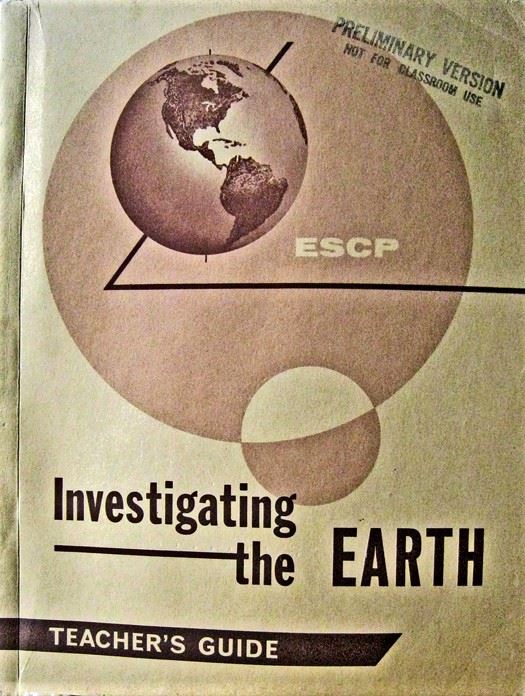
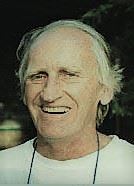 In 1963, the ESCP—one of several national science projects to improve HS science education, funded by NSF/supported by AGI—formed a group of college professors in Boulder, CO —for many years hosting summer in-service conferences for H.S. teachers. ESCP developed a new textbook; it is fair to say Investigating the Earth was groundbreaking, it did two things:
In 1963, the ESCP—one of several national science projects to improve HS science education, funded by NSF/supported by AGI—formed a group of college professors in Boulder, CO —for many years hosting summer in-service conferences for H.S. teachers. ESCP developed a new textbook; it is fair to say Investigating the Earth was groundbreaking, it did two things:
.jpg) Rod Cranson asked as a young ES teacher at Waverly HS. After research it was obvious—very little—& led to a research project with Dr. Julian Brandou, Michigan State University. During the project, Cranson conducted a survey included a question: "interest in ES newsletter" —the reply was resounding & 1st issue of "Michigan Earth Scientist" (MES) mailed 1965 as a small pamphlet
Rod Cranson asked as a young ES teacher at Waverly HS. After research it was obvious—very little—& led to a research project with Dr. Julian Brandou, Michigan State University. During the project, Cranson conducted a survey included a question: "interest in ES newsletter" —the reply was resounding & 1st issue of "Michigan Earth Scientist" (MES) mailed 1965 as a small pamphlet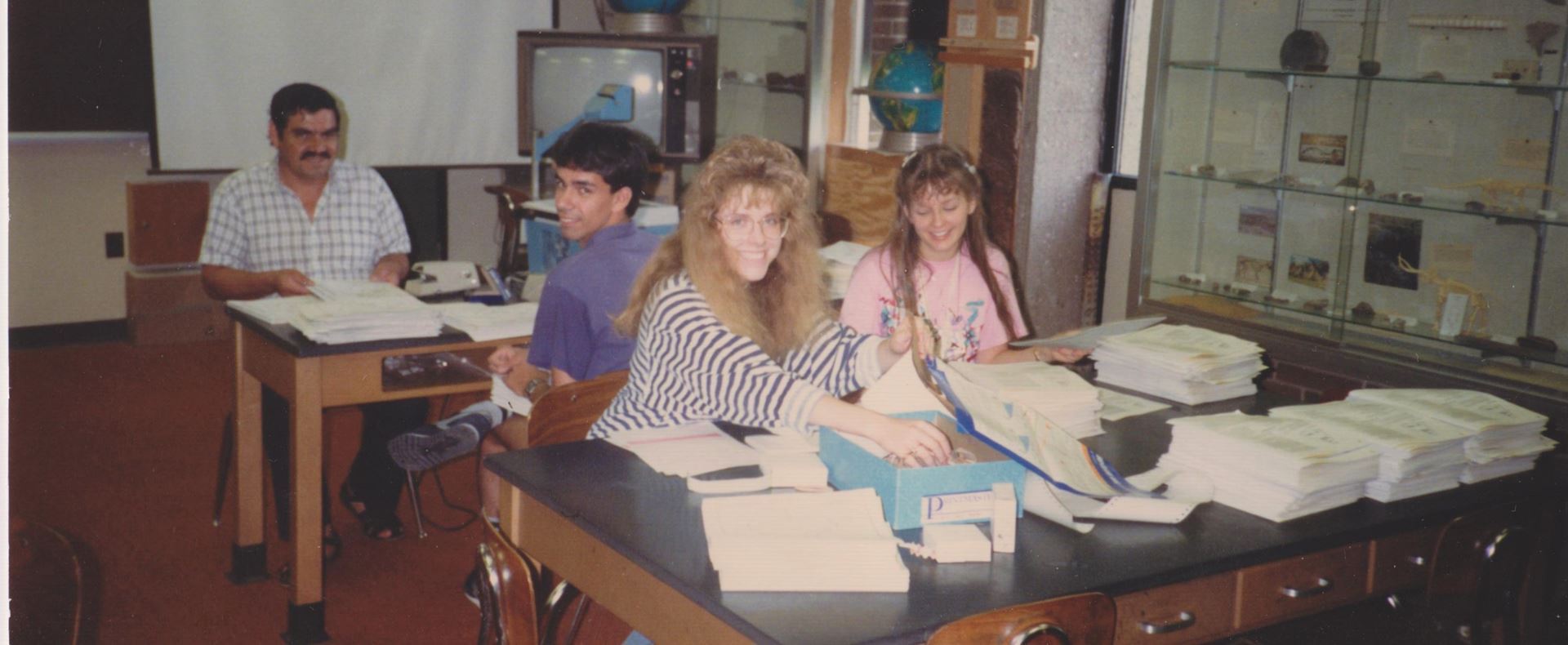
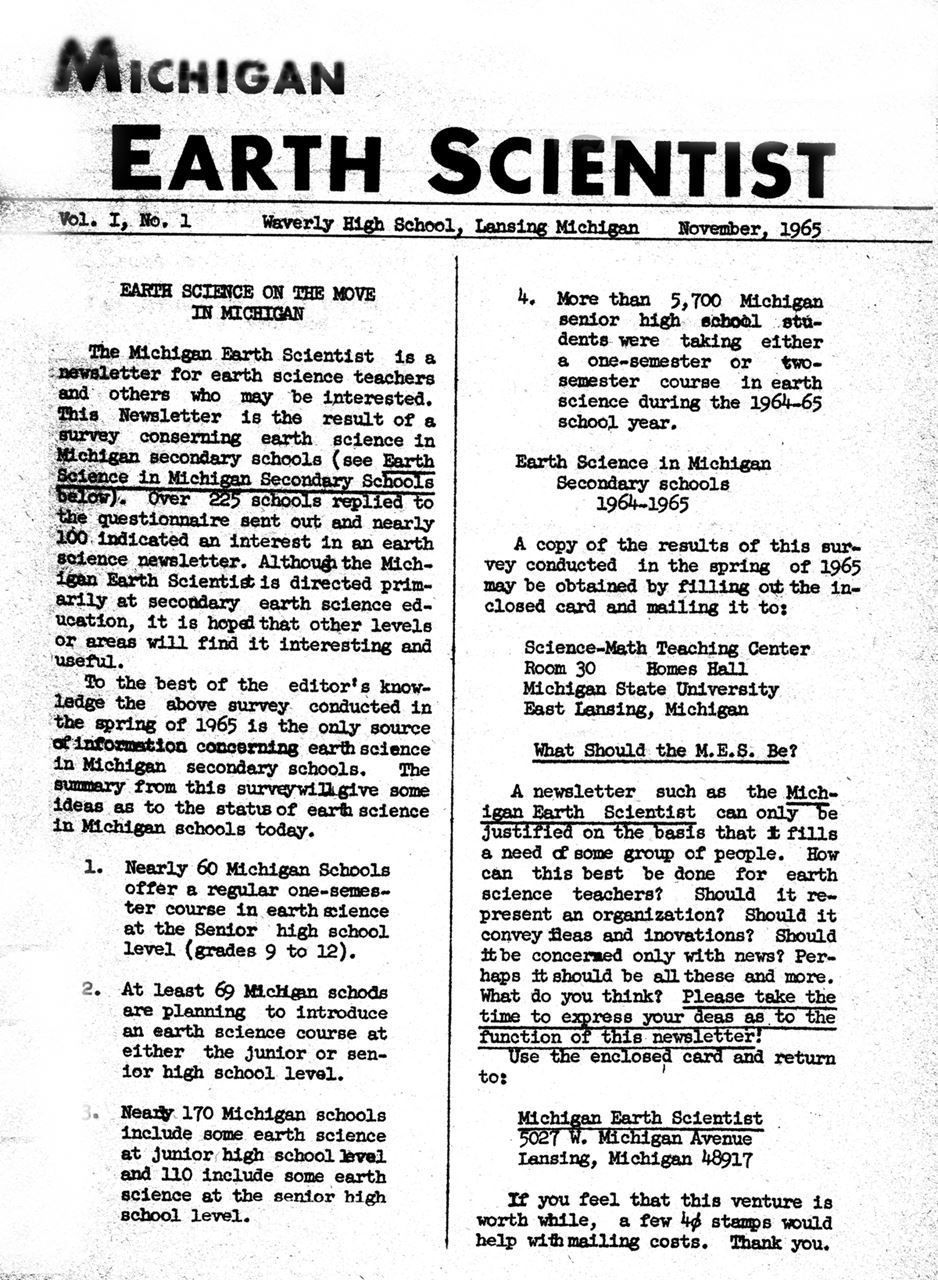
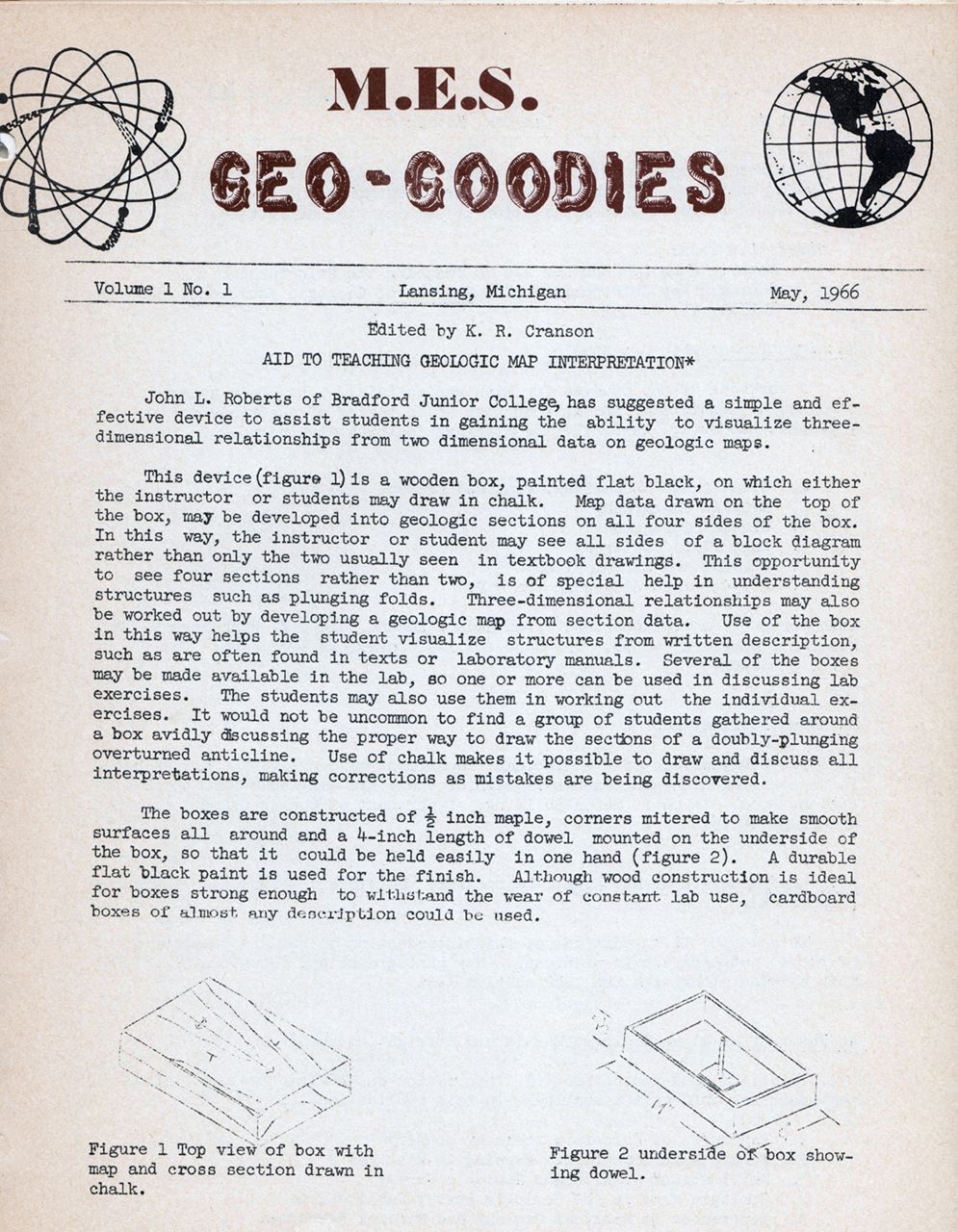
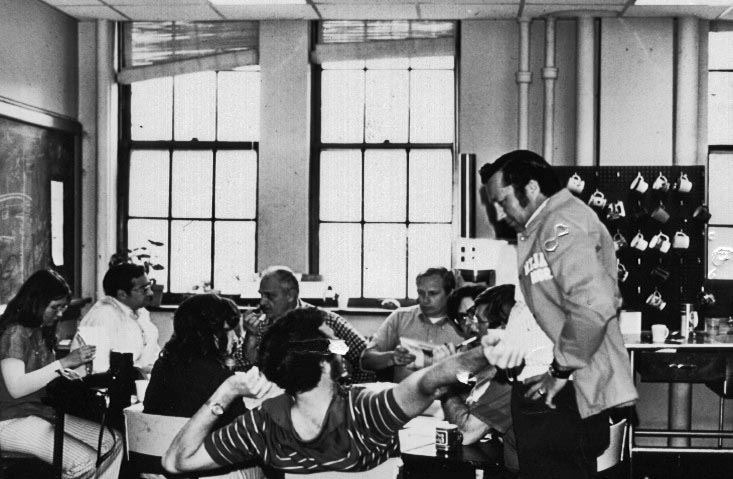
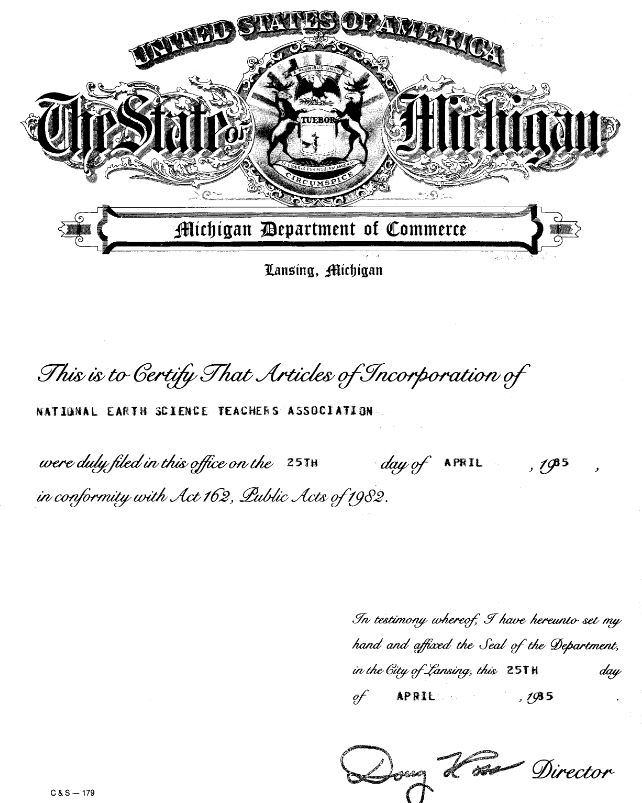
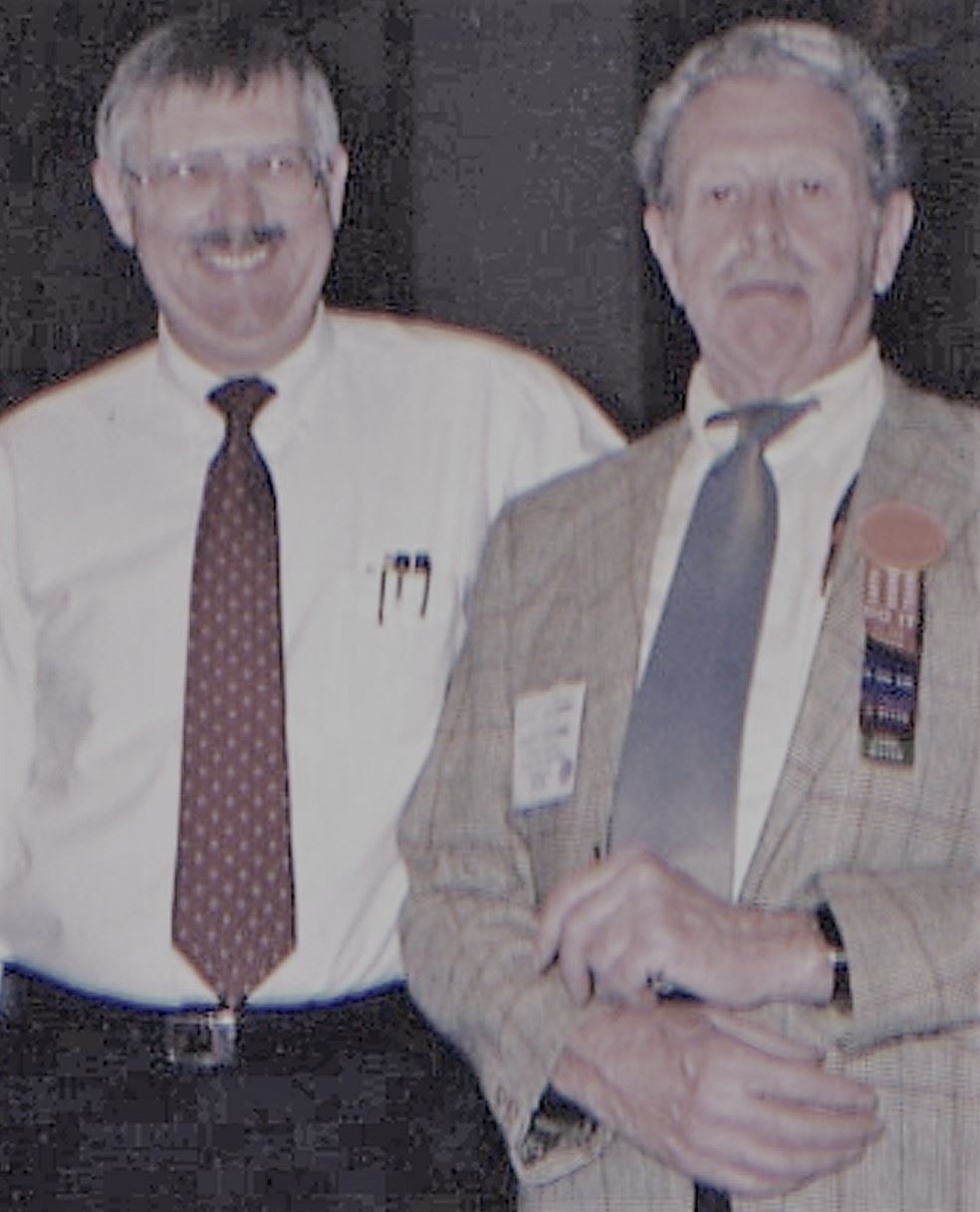 Rod Cranson: "I have a clear memory of when & where the idea of a national ES teachers organization originated. In late 1981 (December?) Harold Stonehouse & I were driving back to Lansing after a MESTA board meeting in SE Michigan. We wondered if other State ES teachers would be interested in getting together as we had done in Michigan.
Rod Cranson: "I have a clear memory of when & where the idea of a national ES teachers organization originated. In late 1981 (December?) Harold Stonehouse & I were driving back to Lansing after a MESTA board meeting in SE Michigan. We wondered if other State ES teachers would be interested in getting together as we had done in Michigan. 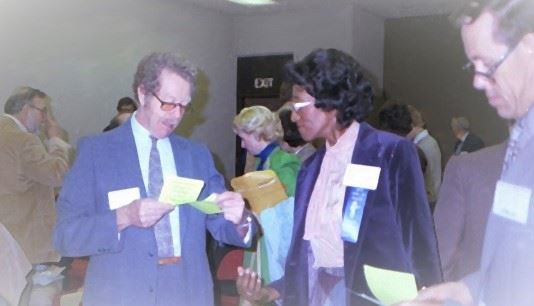
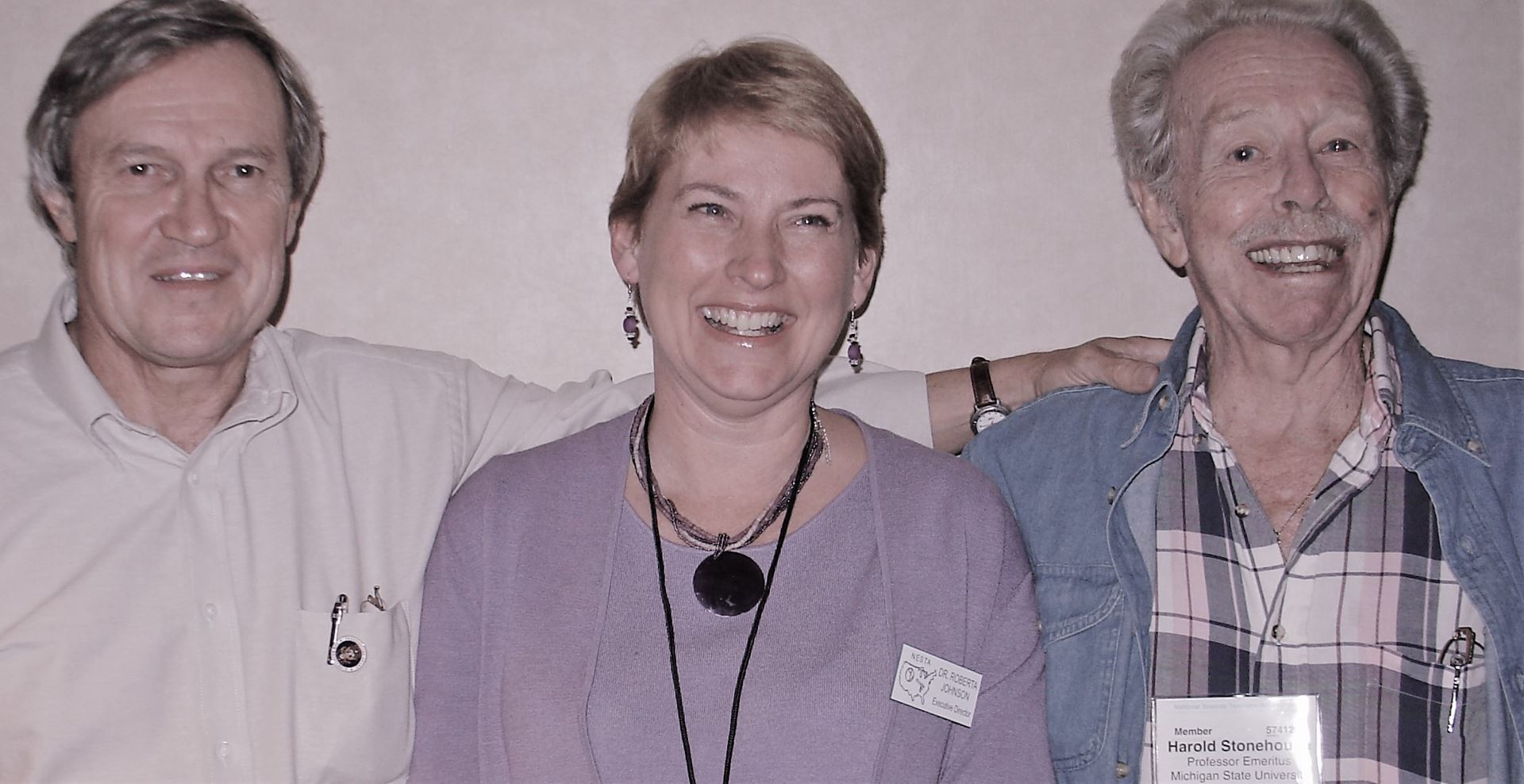
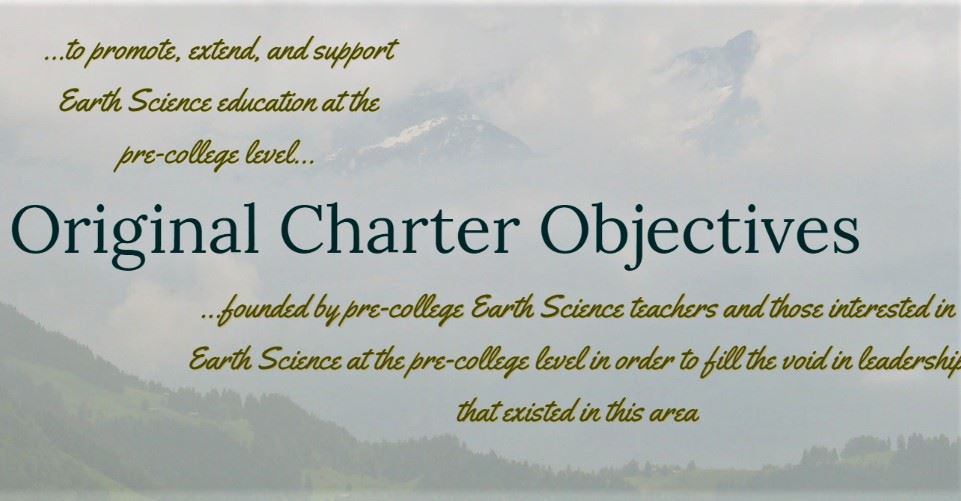


.jpg)
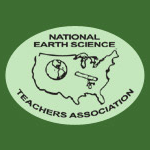
.png)


